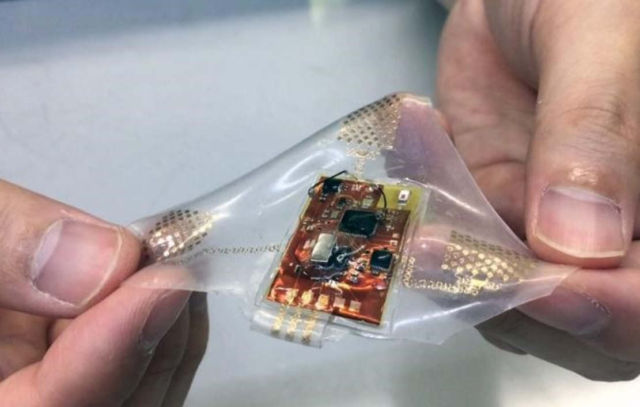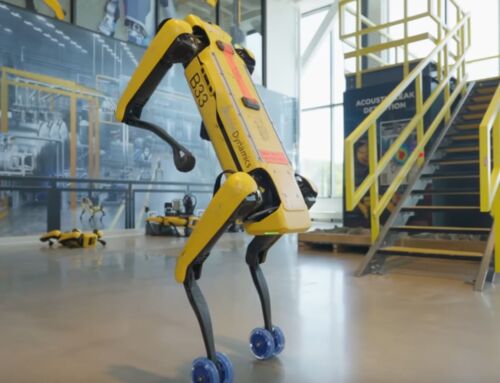Engineers created wireless wearable health monitor that uses stretchable electronics.
A wireless, wearable monitor built with stretchable electronics developed by Georgia Tech engineers, could allow comfortable, long-term health monitoring of adults, babies and small children without concern for skin injury or allergic reactions caused by conventional adhesive sensors with conductive gels.
The soft and conformable monitor can broadcast electrocardiogram (ECG), heart rate, respiratory rate and motion activity data as much as 15 meters to a portable recording device such as a smartphone or tablet computer. The electronics are mounted on a stretchable substrate and connected to gold, skin-like electrodes through printed connectors that can stretch with the medical film in which they are embedded.
“This health monitor has a key advantage for young children who are always moving, since the soft conformal device can accommodate that activity with a gentle integration onto the skin,” said Woon-Hong Yeo, an assistant professor in the George W. Woodruff School of Mechanical Engineering and Wallace H. Coulter Department of Biomedical Engineering at the Georgia Institute of Technology. “This is designed to meet the electronic health monitoring needs of people whose sensitive skin may be harmed by conventional monitors.”
Details of the monitor were reported July 24 in the journal Advanced Science. The research was supported by the Imlay Innovation Fund at Children’s Healthcare of Atlanta, NextFlex (Flexible Hybrid Electronics Manufacturing Institute), and by a seed grant from the Institute for Electronics and Nanotechnology at Georgia Tech. The monitor has been studied on both animal models and humans.
Because the device conforms to the skin, it avoids signal issues that can be created by the motion of the typical metal-gel electrodes across the skin. The device can even obtain accurate signals from a person who is walking, running or climbing stairs.
“When you put a conventional electrode on the chest, movement from sitting up or walking creates motion artifacts that are challenging to separate from the signals you want to measure,” he said. “Because our device is soft and conformal, it moves with the skin and provides information that cannot be seen with the motion artifacts of conventional sensors.”
Image credit John Toon, Georgia Tech
source Georgia Tech






Leave A Comment